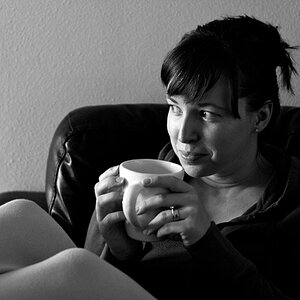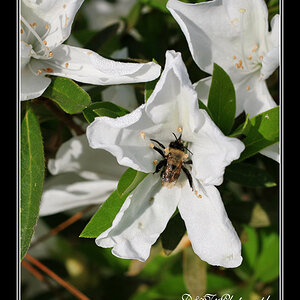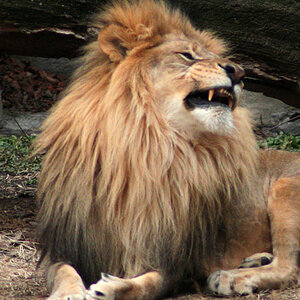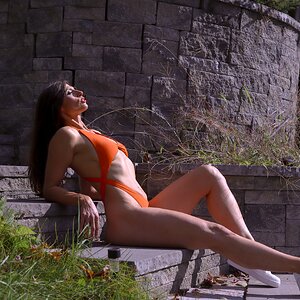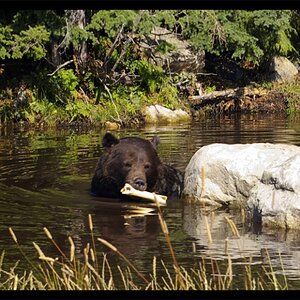Irishwhistler
Been spending a lot of time on here!
- Joined
- Nov 1, 2018
- Messages
- 1,898
- Reaction score
- 1,553
- Location
- New England
- Can others edit my Photos
- Photos NOT OK to edit
The main objective of high level retriever training is the development of retrievers capable of recovering downed upland game birds and waterfowl over both land and water. A well trained retriever minimizes leg work by the hunter, disturbance to the hunt or area being hunted, and makes for a much higher level of recovery of downed game birds than would be possible by those hunting without a dog.
The following sequence demonstrates a typical session of water work specific to being able to directionally handle a retriever by using whistle signals, gestural cues, and verbal commands to the specific location of a downed bird. The ability to accurately cast the direction of the dog at any distance from the handler to the downed bird is critical to the recovery of downed birds. Poorly marked birds or a bird that the dog has not seen fall ( a blind retrieve) are able to be recovered by the hunter / handler and retriever working together as a team. Highly intensive training creates a relationship of trust between the handler and the retriever. The retriever learns that if the handler is casting him on a specific line, that there is in fact a bird to be retrieved.
The sequence depicted is of the actual and initial instructional introduction of a young retriever trainee to directional casting on the water. This training is done subsequently to similar training conducted on land to a solid level of performance by the retriever trainee. These skills will need to be trained to a highly conditioned level for our retriever MAC to advance into the next levels of hunt testing that he will be campaigned in.

~ The Send ~ I am seen lining my dog MAC prior to sending him to retrieve a training bumper floating out on the water. MAC is expected to remain seated and steady at my side until given a release command to make the retrieve. Initially, I will run MAC on several retrieves of the bumper releasing him on the verbal commands "DEAD BIRD - BACK". The job of the retriever is to take a straight line in the direction sent until the retrieve is made or the handler casts him / her in a different direction, or the dog is recalled to the handler.

~ On Retrieve ~ Having been issued the release command, our trainee MAC can be seen rocketing in a straight line and is just about to enter the water to make his way out to the bumper to make the retrieve. MAC was sent on several such retrieves using the BACK command and allowed to run the full sequence without being given any additional commands for directional change (a cast).

~ The Setup ~ I can be seen having sent MAC on a straight line to the bumper on the verbal command "BACK". He will be stopped in the water with a single peep on my training whistle, a signal that he has been conditioned to turn and face me in wait for a gestural cue for directional change (a cast). On land, the dog turns toward the handler and sits facing the handler with intense visual focus in waiting to be cast directionally. In the water, the retriever is trained to turn and face the handler, and to tread water while waiting for a directional cast from the handler. The dog will then be cast either to continue going directly away from the handler when it will turn 180 degrees and continue on that line, or to take an "OVER" cast in making a 90 degree turn either to its left or right as determined by a gestural cue (OVER cast) as made by the handler.

~ The Whistle Stop ~ A single peep on my whistle has MAC turn 180 degrees to face me while he treads water in waiting for a directional cast by me. His visual focus is on me as I frame his head with both of my hands. MAC understands this cue to maintain intensive visual focus on me and I use it to keep him on a narrow line of direction or spatial orientation. I use random and increasing lentos of duration in keeping him treading water, a means of conditioning accurate control of the retriever's movement while he / she is in the water.

~ Over ~ Subsequent to the whistle stop, I am seen giving an OVER cast to our trainee MAC seen making the correct directional change, he will continue in that direction to make the retrieve of another of three bumpers placed out on the water simultaneously. During our session, MAC will be sent on several retrieves consisting of the commands BACK in going continually to the bumper placed at 12 o'clock, and OVER casts both right and left to the bumpers placed at 3 and 9 o'clock. The contrasting of directional casting within the context of our session will aid quickly in teaching MAC that this T - drill conducted on the water, is simply an extension of those skills which he has already developed on land. An intelligent retriever that has been motivated to love learning and training starting at age eight weeks, MAC quickly understands the concepts being instructed. Repetition of these drills and generalizing them to varying locations will result in MAC learning to dependably take directional casts on water. These skills will be critical in teaching MAC to solidly perform blind retrieves in recovering birds that he has not seen fall to a location on the water. MAC will be drilled on these skills over the next few weeks with his proficiency being carefully monitored and the length of the casts made being extended.

~ On Return ~ MAC is seen making his way back to shore with the retrieved bumper. He responds to my three peeps on the training whistle, a signal he has been conditioned to recall to the handler upon hearing. I am seen giving him a gestural cue to return to the place board platform.

~ The Delivery ~ MAC has returned to sit at my left side with the bumper held in his mouth while on the place board platform. He will maintain this position and hold of the bumper or bird until issued the verbal command "GIVE" at which time he will gently release the bumper / bird into my hand. I purposely use random lengths of time before issuing the "GIVE" command and accepting the delivery from the retriever trainee, this resulting in a more dependable and solidified hold and a classic presentation to hand being executed by the retriever. Not simply based in great style, this emphasis on solid delivery to hand minimizes the potential for the escape and loss of a wounded bird.
Our trainee in this sequence is SHR LAKE CHAFFEE'S AUTUMN LEGACY O' TRAD FINIAN MAC JH. MAC currently is titled at the HRC Started Hunting Retriever level and at the AKC Junior Hunter level. MAC has had two seasons of hunting birds behind him and one season participating as a K9 athlete in both HRC and AKC hunt tests. MAC is steady to wing, shot, and fall and has had many bird contacts, flushes, and subsequent retrieves. Plans are to continue MAC'S training to advancing levels of competency and to campaign him this year toward an HRC Upland Hunter title, and HRC Hunting Retriever title, and an AKC Senior Hunter title. MAC is currently 8 for 8 passing qualifying scores in his hunt test career.
There is still much to learn for this young retriever, but MAC has a very solid foundation upon which to launch our efforts in training toward those advanced objectives. MAC is owned and trained by yours truly. All images in this sequence were captured by my wife Lisa.
Cheers,
THE DOG WHISTLER
The following sequence demonstrates a typical session of water work specific to being able to directionally handle a retriever by using whistle signals, gestural cues, and verbal commands to the specific location of a downed bird. The ability to accurately cast the direction of the dog at any distance from the handler to the downed bird is critical to the recovery of downed birds. Poorly marked birds or a bird that the dog has not seen fall ( a blind retrieve) are able to be recovered by the hunter / handler and retriever working together as a team. Highly intensive training creates a relationship of trust between the handler and the retriever. The retriever learns that if the handler is casting him on a specific line, that there is in fact a bird to be retrieved.
The sequence depicted is of the actual and initial instructional introduction of a young retriever trainee to directional casting on the water. This training is done subsequently to similar training conducted on land to a solid level of performance by the retriever trainee. These skills will need to be trained to a highly conditioned level for our retriever MAC to advance into the next levels of hunt testing that he will be campaigned in.
~ The Send ~ I am seen lining my dog MAC prior to sending him to retrieve a training bumper floating out on the water. MAC is expected to remain seated and steady at my side until given a release command to make the retrieve. Initially, I will run MAC on several retrieves of the bumper releasing him on the verbal commands "DEAD BIRD - BACK". The job of the retriever is to take a straight line in the direction sent until the retrieve is made or the handler casts him / her in a different direction, or the dog is recalled to the handler.
~ On Retrieve ~ Having been issued the release command, our trainee MAC can be seen rocketing in a straight line and is just about to enter the water to make his way out to the bumper to make the retrieve. MAC was sent on several such retrieves using the BACK command and allowed to run the full sequence without being given any additional commands for directional change (a cast).
~ The Setup ~ I can be seen having sent MAC on a straight line to the bumper on the verbal command "BACK". He will be stopped in the water with a single peep on my training whistle, a signal that he has been conditioned to turn and face me in wait for a gestural cue for directional change (a cast). On land, the dog turns toward the handler and sits facing the handler with intense visual focus in waiting to be cast directionally. In the water, the retriever is trained to turn and face the handler, and to tread water while waiting for a directional cast from the handler. The dog will then be cast either to continue going directly away from the handler when it will turn 180 degrees and continue on that line, or to take an "OVER" cast in making a 90 degree turn either to its left or right as determined by a gestural cue (OVER cast) as made by the handler.
~ The Whistle Stop ~ A single peep on my whistle has MAC turn 180 degrees to face me while he treads water in waiting for a directional cast by me. His visual focus is on me as I frame his head with both of my hands. MAC understands this cue to maintain intensive visual focus on me and I use it to keep him on a narrow line of direction or spatial orientation. I use random and increasing lentos of duration in keeping him treading water, a means of conditioning accurate control of the retriever's movement while he / she is in the water.
~ Over ~ Subsequent to the whistle stop, I am seen giving an OVER cast to our trainee MAC seen making the correct directional change, he will continue in that direction to make the retrieve of another of three bumpers placed out on the water simultaneously. During our session, MAC will be sent on several retrieves consisting of the commands BACK in going continually to the bumper placed at 12 o'clock, and OVER casts both right and left to the bumpers placed at 3 and 9 o'clock. The contrasting of directional casting within the context of our session will aid quickly in teaching MAC that this T - drill conducted on the water, is simply an extension of those skills which he has already developed on land. An intelligent retriever that has been motivated to love learning and training starting at age eight weeks, MAC quickly understands the concepts being instructed. Repetition of these drills and generalizing them to varying locations will result in MAC learning to dependably take directional casts on water. These skills will be critical in teaching MAC to solidly perform blind retrieves in recovering birds that he has not seen fall to a location on the water. MAC will be drilled on these skills over the next few weeks with his proficiency being carefully monitored and the length of the casts made being extended.
~ On Return ~ MAC is seen making his way back to shore with the retrieved bumper. He responds to my three peeps on the training whistle, a signal he has been conditioned to recall to the handler upon hearing. I am seen giving him a gestural cue to return to the place board platform.
~ The Delivery ~ MAC has returned to sit at my left side with the bumper held in his mouth while on the place board platform. He will maintain this position and hold of the bumper or bird until issued the verbal command "GIVE" at which time he will gently release the bumper / bird into my hand. I purposely use random lengths of time before issuing the "GIVE" command and accepting the delivery from the retriever trainee, this resulting in a more dependable and solidified hold and a classic presentation to hand being executed by the retriever. Not simply based in great style, this emphasis on solid delivery to hand minimizes the potential for the escape and loss of a wounded bird.
Our trainee in this sequence is SHR LAKE CHAFFEE'S AUTUMN LEGACY O' TRAD FINIAN MAC JH. MAC currently is titled at the HRC Started Hunting Retriever level and at the AKC Junior Hunter level. MAC has had two seasons of hunting birds behind him and one season participating as a K9 athlete in both HRC and AKC hunt tests. MAC is steady to wing, shot, and fall and has had many bird contacts, flushes, and subsequent retrieves. Plans are to continue MAC'S training to advancing levels of competency and to campaign him this year toward an HRC Upland Hunter title, and HRC Hunting Retriever title, and an AKC Senior Hunter title. MAC is currently 8 for 8 passing qualifying scores in his hunt test career.
There is still much to learn for this young retriever, but MAC has a very solid foundation upon which to launch our efforts in training toward those advanced objectives. MAC is owned and trained by yours truly. All images in this sequence were captured by my wife Lisa.
Cheers,
THE DOG WHISTLER



![[No title]](/data/xfmg/thumbnail/36/36601-26ec0a53712c5470af53be9652811a6e.jpg?1619737641)

![[No title]](/data/xfmg/thumbnail/34/34691-2fa9779b0e77f698b193a633b9242553.jpg?1619736604)
